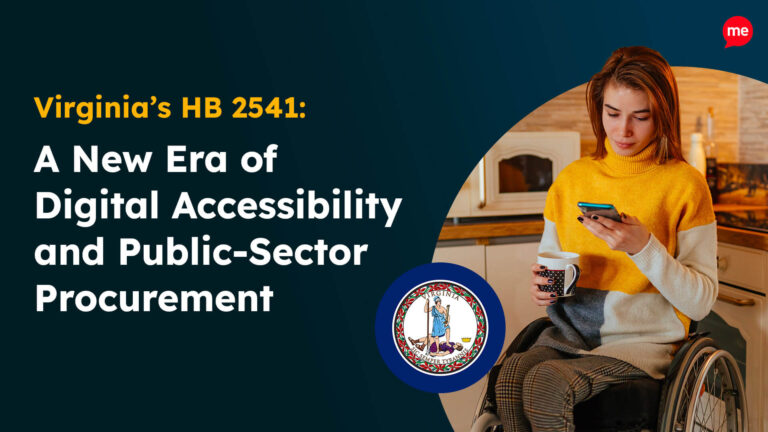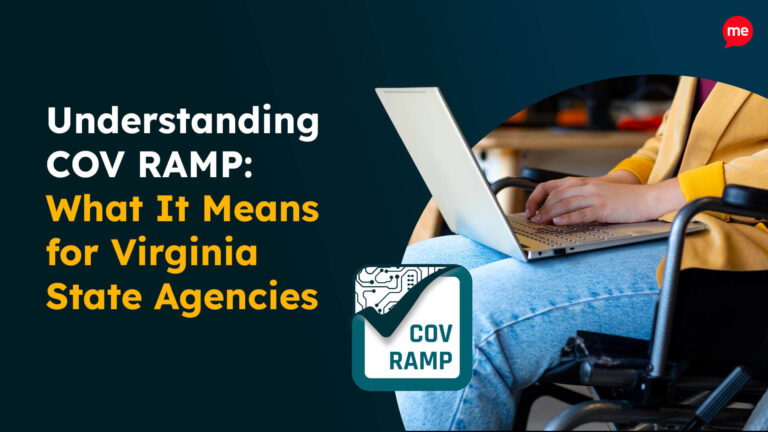Get Your Free Accessibility & Inclusion Toolkit
Download NowIf you operate in Nova Scotia (whether you’re a municipality, a large corporation, a nonprofit, or a small business) the Nova Scotia Accessibility Act introduces new legal responsibilities that could affect nearly every aspect of your operations. These requirements may influence how you deliver services, design and maintain spaces, communicate with the public, and manage hiring and workplace practices. The legislation extends well beyond physical accessibility, covering websites, digital tools, transportation, education, and more.
By understanding these obligations early, you can avoid costly, last-minute compliance efforts. This guide explains what the Act is, who it applies to, key deadlines, and practical steps to prepare.
What is the Nova Scotia Accessibility Act (Bill 59)?
The Nova Scotia Accessibility Act (Bill 59) was passed on April 27, 2017, making Nova Scotia the third province in Canada to bring in this type of legislation, after Ontario and Manitoba. With Nova Scotia having the highest disability rate in the country, the Act is especially significant. It aims to identify, prevent, and remove barriers that prevent people with disabilities from participating fully in society.

Key goals of the Act include:
- Achieving an accessible Nova Scotia by 2030.
- Establishing clear accessibility standards in priority areas such as:
- The built environment
- Education
- Employment
- Goods and services
- Information and communication
- Public transportation
- Creating the Accessibility Directorate (part of the Department of Justice), responsible for education, compliance monitoring, and enforcement.
The law defines accessibility barriers broadly to include not just physical obstacles like stairs without ramps, but also systemic and attitudinal barriers, and digital barriers such as inaccessible websites.
Which organizations need to become Nova Scotia Accessibility Act compliant?
The Act applies to a wide range of entities, including:
Public sector bodies, such as:
- Provincial government departments and agencies
- Municipal governments
- Crown corporations
- Public schools, universities, and colleges

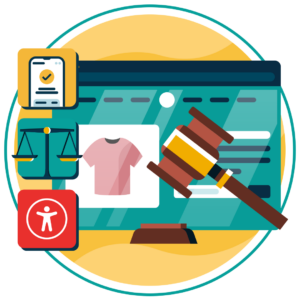
While the law initially focuses on public bodies, private businesses will also be subject to accessibility standards as they are phased in. This includes:
- Retail stores
- Restaurants and hospitality providers
- Professional service firms
- Manufacturing and industrial employers
Charities, cultural organizations, sports clubs, and other nonprofits must also comply once relevant standards come into effect.
The standards may have different timelines and obligations for different sectors. Smaller organizations may receive more time or flexibility, but they are not exempt.
Get a free automated accessibility check of your websites homepage. This will identify and highlight any compliance issues on your website. Followed by recommendations on how to implement the necessary changes to make your website more accessible.
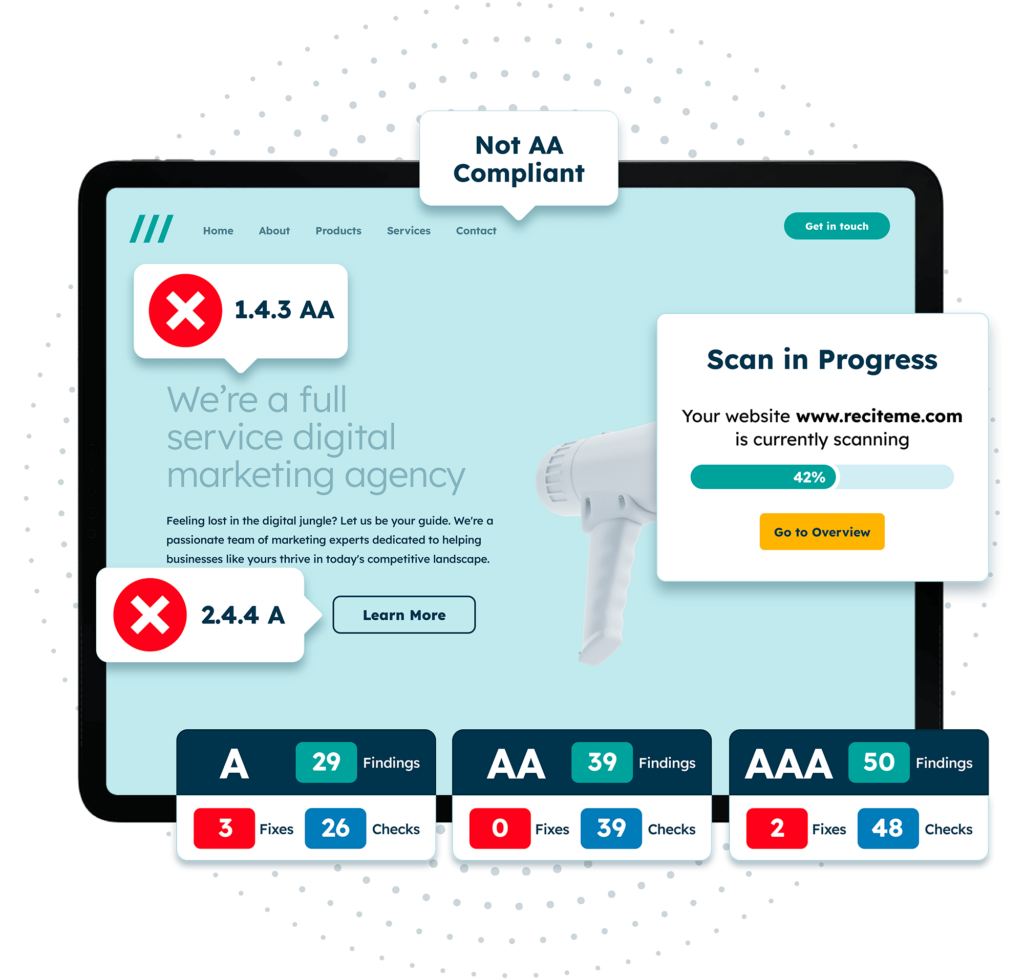
When are the deadlines for accessibility compliance?
The Act sets a province-wide goal of full accessibility by 2030, but the journey is broken into staged deadlines. The Accessibility Advisory Board develops standards in specific areas, which are then phased in over several years.

Built Environment Accessibility Standard
- Status: This standard is now law.
- What it covers: Accessibility requirements for physical spaces, including entrances, ramps, accessible washrooms, signage, doorways, parking, and paths of travel.
- Enforcement start date: April 1, 2026.
- Who must comply: The Government of Nova Scotia, prescribed public sector bodies under the Accessibility Act, and any organization that owns, operates, or maintains buildings or other parts of the built environment (including businesses and community organizations).
Education Accessibility Standard
- Status: Expected 2026.
- What it covers: Accessibility in K–12 schools, post-secondary institutions, and training facilities. Examples include accessible learning materials, classroom layouts, digital platforms, assistive technology, inclusive teaching practices.
- Compliance timeline: To be confirmed after adoption, but likely 1–2 years from effective date.

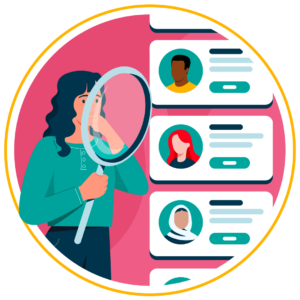
Employment Accessibility Standard
- Status: Expected 2027.
- What it covers: Workplace accessibility in recruitment, hiring, policies, accommodations, and training. Examples include accessible job postings, interview processes, adaptive equipment, barrier-free workspaces.
- Compliance timeline: Anticipated transition period after adoption, the public sector may have earlier deadlines.
Goods and Services Accessibility Standard
- Status: Expected 2027.
- What it covers: Ensuring public-facing goods and services are accessible to people with disabilities. Examples include accessible counters, communication supports, service animal policies, booking systems, and websites.
- Compliance timeline: To be set upon adoption. Organizations should prepare early to avoid rushed retrofits.


Information and Communication Accessibility Standard
- Status: Expected 2028-29.
- What it covers: Accessibility for information sharing, digital content, and communication channels. Examples include websites meeting WCAG 2.1 AA, accessible PDFs, captioned videos, plain language policies, large-print or Braille formats.
- Compliance timeline: To be confirmed, but digital accessibility requirements are likely to be among the earliest enforced.
Public Transport Accessibility Standard
- Status: Expected 2028-29.
- What it covers: Accessibility requirements for all forms of public transportation. Examples include low-floor buses, tactile signage, real-time audio/visual announcements, accessible ticketing and boarding processes.
- Compliance timeline: Likely staged implementation depending on transport provider and infrastructure upgrade needs.

How does Bill 59 apply to digital accessibility?
While early implementation focused on the built environment and physical access, digital accessibility is now a priority. This covers:
- Websites
- Mobile apps
- Digital kiosks
- Online forms and documents
The standards will likely require compliance with Web Content Accessibility Guidelines (WCAG) 2.1 Level AA, the global benchmark. This includes:
- Sufficient color contrast for text
- Keyboard-only navigation
- Descriptive alternative text for images
- Accessible PDFs and downloadable content
- Proper form labels and error messages
Example: If a municipality publishes tax forms online, they must ensure those forms are screen-reader compatible and that navigation works without a mouse.
Even if you’re not yet mandated, adopting digital accessibility now will save costs later and improve user experience for everyone.
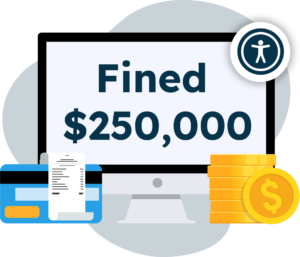
Is the Nova Scotia Accessibility Act enforceable?
Yes. The Act is backed by enforceable legal powers. The Accessibility Directorate has authority to:
- Conduct inspections
- Issue compliance orders
- Levy fines for non-compliance
- Require corrective action within specified timelines
Once Government staff have verified non-compliance, they will work together with the organization to address these areas. They may provide extra tools and resources like training to help achieve compliance. If these steps are unsuccessful and the organization remains non-compliant, then the Government can step in and issue compliance orders, administrative penalties, and as a last resort, fines which can reach $250,000 for serious violations.
Tools to make sure you’re compliant before the Bill 59 deadline
Breaking the process into manageable steps will help you meet your obligations under the Nova Scotia Accessibility Act well before the deadline. The following actions focus on practical, high-impact changes that address digital accessibility. While the exact requirements will depend on your industry and the standards that apply to you, starting early ensures you avoid costly last-minute fixes and reputational risk.
1. Run an accessibility audit of your website
An accessibility audit is the first step to understanding where your website stands. Use automated tools such as our Accessibility Checker to quickly identify common issues such as low color contrast, missing image descriptions, or inaccessible forms.
A manual audit is also vital as it can evaluate real-world usability with assistive technologies like screen readers or keyboard navigation. This two-step approach gives you a complete picture of your accessibility gaps, helping you prioritize fixes and plan for full compliance with WCAG 2.1 AA standards.
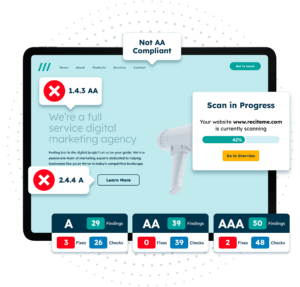
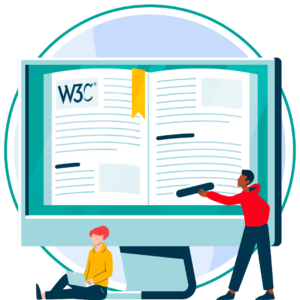
2. Implement fixes based on the results of your audit
Once you know what needs improvement, create a prioritized action plan. Address high-impact barriers first, such as:
- Adding descriptive alt text to images
- Correcting poor color contrast between text and backgrounds
- Making website forms accessible with proper labels and error messages
- Replacing vague “click here” links with descriptive link text
- Providing captions and transcripts for videos and audio content
These changes often require minimal technical effort but can greatly improve usability for people with visual, auditory, or cognitive disabilities. Ensure fixes are tested again after implementation to confirm accessibility has improved.
3. Train your staff on accessibility best practices
If your team understands accessibility principles, you’ll prevent future issues before they happen. Train content editors to add alt text and use proper heading structure, developers to write clean, semantic code that works with assistive technologies, and customer service staff to communicate in an inclusive, respectful way.
To do this, you can include website accessibility training in employee onboarding and offer refreshers regularly. It’s also beneficial to give your staff experience using your site or services with accessibility tools, after all empowering your team is key to lasting compliance.

4. Create an accessibility document for your website
Documenting your accessibility efforts builds trust and transparency. This could include:
- An accessibility statement outlining your current level of accessibility, your commitment to improvement, and how people can provide feedback or request accommodations.
- A multi-year accessibility plan (if required for your sector) detailing goals, timelines, and responsibilities for meeting accessibility standards.
Publish your accessibility document prominently on your website so it’s easy to find. Update it regularly as you make progress. Not only does this demonstrate commitment under Bill 59, but it also signals to customers, employees, and regulators that accessibility is a priority.
Our 40-page Digital Accessibility & Inclusion Toolkit helps businesses break down online barriers and make a real impact. It offers practical advice on all aspects of digital accessibility, from writing an accessibility statement to accessible website tips and inclusive hiring.
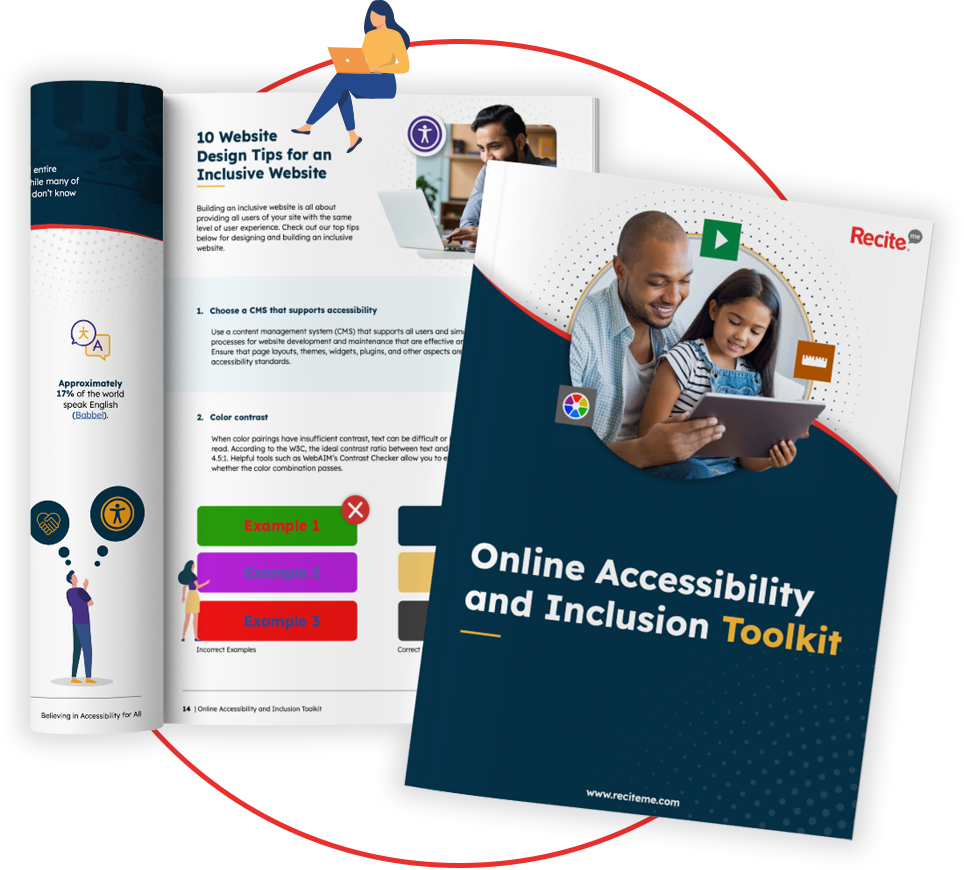
How does the Nova Scotia Accessibility Act integrate with other Canadian accessibility laws
Federally regulated organisations in Nova Scotia must comply with both the Accessible Canada Act (ACA) and the Nova Scotia Accessibility Act. The ACA, in force since 2019, aims for a barrier-free Canada by 2040 and applies to industries such as banking, telecoms, broadcasting, transportation, and federal agencies.
The ACA requires accessibility plans, feedback processes, and progress reports covering seven areas, including ICT, transport, and service delivery.
In Nova Scotia, ACA obligations do not replace provincial ones, both apply. For example, a federally regulated bank must meet federal standards under the ACA while also following Nova Scotia Accessibility Act rules as they come into effect.
The verdict: Get compliant with the Nova Scotia Accessibility Act today
The Nova Scotia Accessibility Act is more than a legal obligation, it’s a step toward an inclusive province where everyone can participate equally. With the 2030 deadline approaching, organizations that act now will avoid rushed, expensive fixes later and benefit from improved customer service, stronger reputations, and compliance with evolving laws.
Nova Scotia Accessibility Act FAQs
Looking for a recap or quick summary? Here are a few of our most frequently asked questions to help you get to grips with the essentials:
Does the Nova Scotia Accessibility Act apply to small businesses?
Yes. While early implementation focuses on public sector organizations, small businesses will eventually have to comply as standards roll out to the private sector. The requirements may be scaled or phased in, but no organization is permanently exempt.
What’s the difference between the Nova Scotia Act and the Accessible Canada Act?
The Nova Scotia Act applies within the province and sets provincial standards. The Accessible Canada Act applies to federally regulated industries across Canada. Some organizations must comply with both.
How will Nova Scotia Accessibility enforcement work?
The Director of Compliance and Enforcement has the power to appoint inspectors to investigate organizations and issue orders to correct non-compliance. Inspectors can respond to complaints or check organizations proactively.
What if I already follow AODA or WCAG 2.1?
You’ll likely meet many requirements, but check for Nova Scotia-specific differences.
Is there support available to help with compliance?
Yes, the Nova Scotia government offers grants and resources for accessibility improvements. Check out their accessibility resources to help you with compliance.

